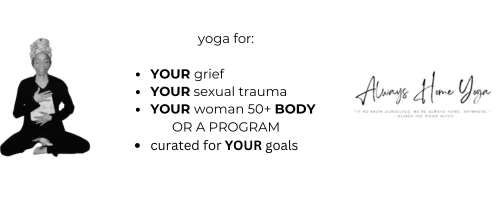Life’s challenges can be overwhelming. Grief and stress can disconnect us from our inner peace. Restorative yoga is a nurturing way to release tension and find calm. Restorative yoga can help you process grief and reduce stress. It does this by focusing on deep relaxation, gentle stretches, and mindful breathing. The practice is compassionate and supportive.
Here are 12 top tips to help you harness the power of restorative yoga for healing:
1. Create a Safe, Comfortable Space
Before you begin, ensure your environment is peaceful and free from distractions. Use soft lighting, calming music, or silence. Add pillows, blankets, and bolsters. They will make your practice more comfortable. You’ll be able to relax fully.
2. Start with Gentle Breathing
Focusing on your breath is a foundational part of any restorative yoga practice. Start by practicing deep belly breathing. Inhale deeply through your nose, allowing your abdomen to expand. Then, exhale slowly. It calms your mind and releases tension. This sets the stage for deeper relaxation.
3. Child’s Pose (Balasana) for Emotional Release
Child’s Pose is a soothing posture. It gently stretches the back. It also fosters a sense of safety and grounding. Rest your forehead on the floor or a bolster. This encourages your nervous system to relax. It may help release emotions from grief.
4. Practice Supported Forward Folds
Restorative forward folds, like a seated forward bend with a pillow, are calming. They release tension and encourage introspection. These poses help you turn inward. They provide space to process feelings of loss and emotional overwhelm.
5. Legs Up the Wall Pose (Viparita Karani) for Calm
This pose is a great way to reset your body and mind. It reduces anxiety and promotes restful relaxation. Elevating your legs helps blood flow to the heart. It can reduce fatigue caused by stress.
6. Focus on Long Exhalations
During your practice, focus on lengthening your exhales. Long exhalations activate the parasympathetic nervous system, the body’s relaxation response. This helps to calm the mind, slow your heart rate, and reduce stress hormones.
7. Use Eye Pillows or a Light Cloth
A soft cloth or eye pillow can block distractions. It can also deepen relaxation. This gentle weight over the eyes can signal to your body that it’s time to rest. It makes it easier to find stillness and peace.
8. Stay Present with Mindful Meditation
Grief can often pull us into the past, while stress pushes us toward future worries. Incorporate moments of mindful meditation throughout your practice. Focus on your breath or the body’s sensations in each posture. This will help you stay present with your experience.
9. Supported Reclining Bound Angle Pose (Supta Baddha Konasana) for Heart Opening
This heart-opening pose gently stretches the chest, shoulders, and hips. It supports the back and legs. Creating space in the chest allows for an emotional release of grief. It also fosters openness to healing.
10. Embrace Stillness and Silence
Restorative yoga emphasizes the power of stillness. Embrace long, slow holds in each posture—sometimes five to ten minutes or longer. This extra time lets your body relax. It’s vital for emotional healing.
11. End with Savasana (Resting Pose)
The practice of Savasana is one of deep surrender. Lie on your back with support under your knees or head if needed, and allow your entire body to relax into the ground. This final pose integrates your practice. It helps you release any tension or emotional weight.
12. Be Gentle with Yourself
Above all, be kind and patient with yourself as you navigate through grief and stress. Restorative yoga isn’t about perfect poses. It’s about nurturing your body and mind. Let your emotions rise without judgment. Trust that healing will take time.
Final Thoughts
Restorative yoga is a gentle, powerful way to process grief and reduce stress. You can start to release your burdens. Create a calm space, practice mindful breathing, and embrace stillness. Healing is a journey. Restorative yoga can be a supportive companion.
Use these tips in your next practice. Rediscover your inner peace. Serenity is always just a breath away.

